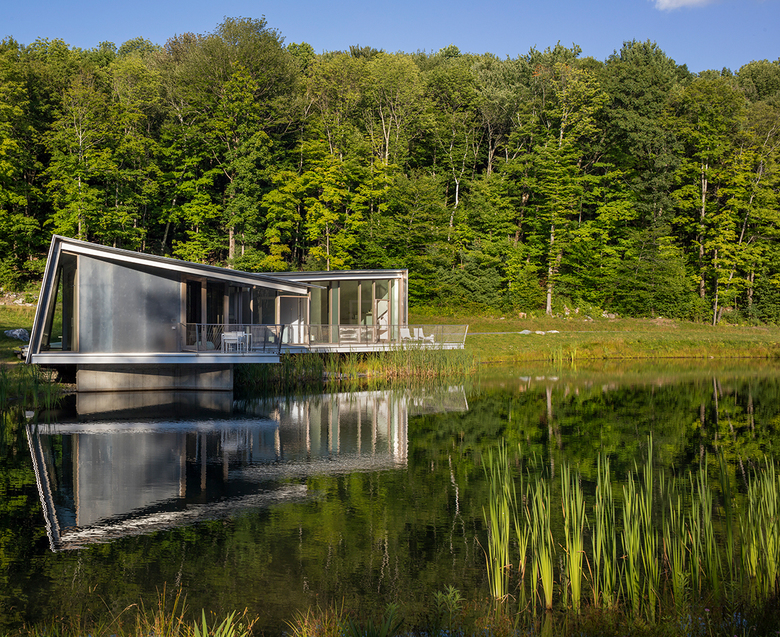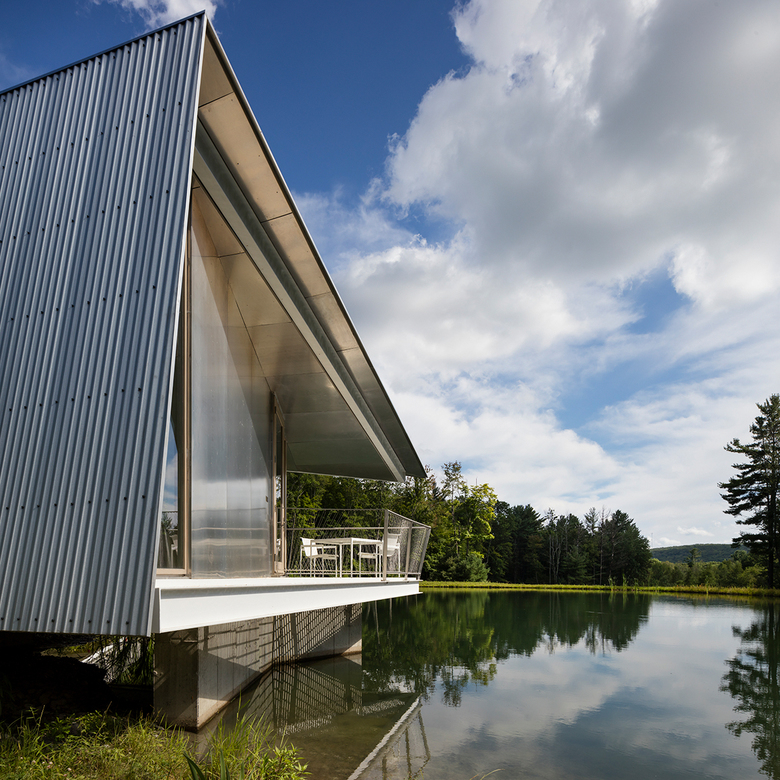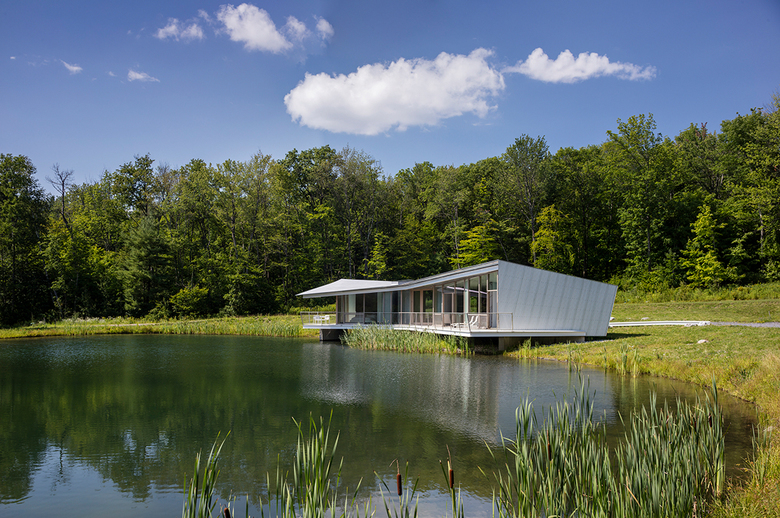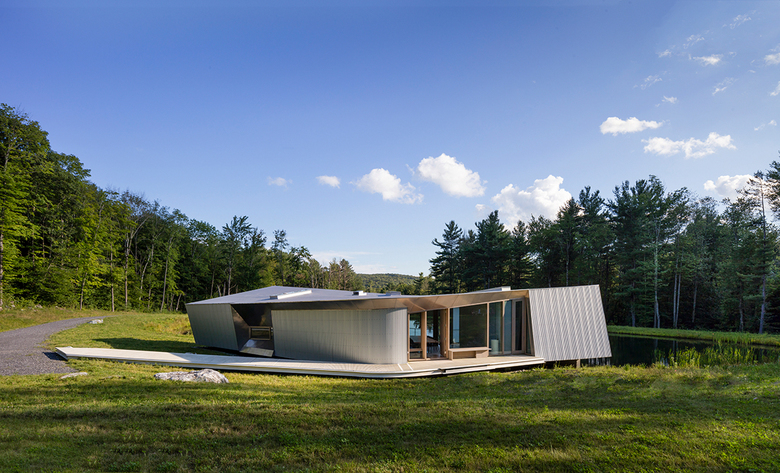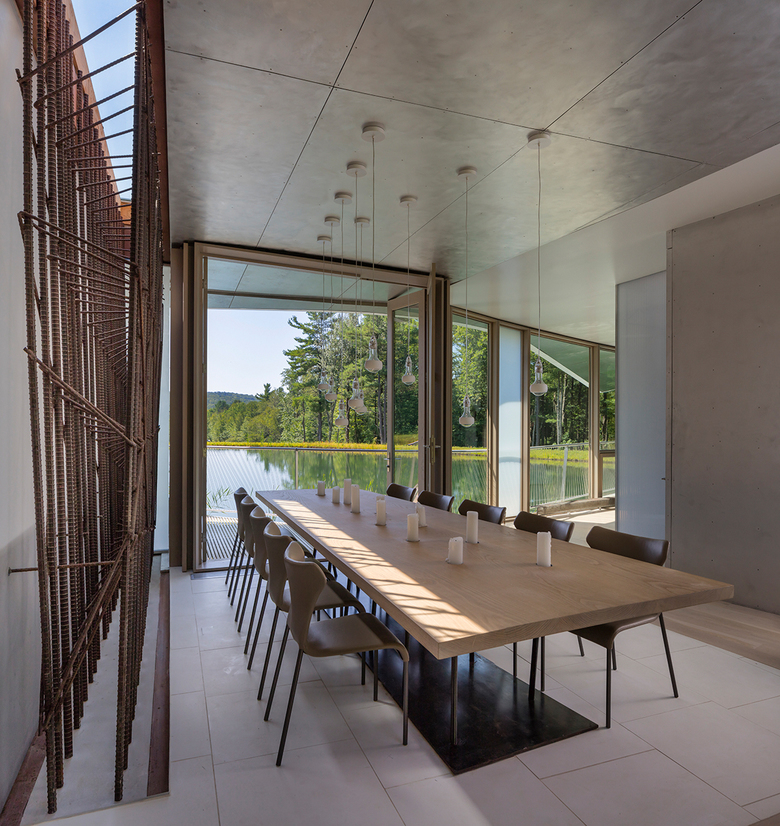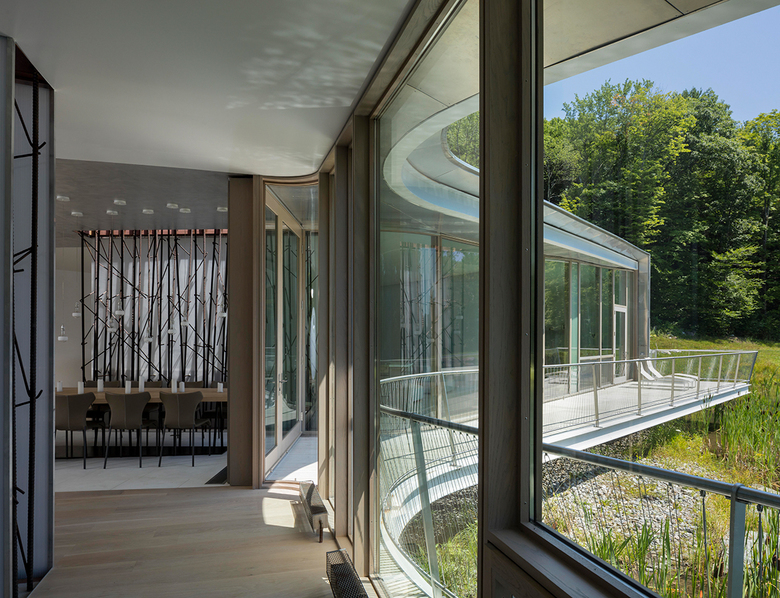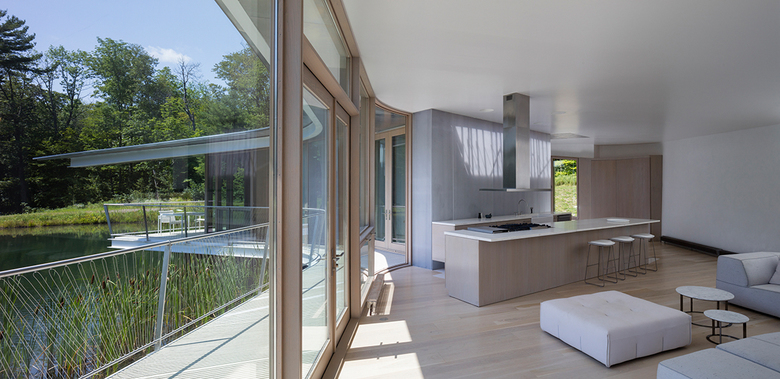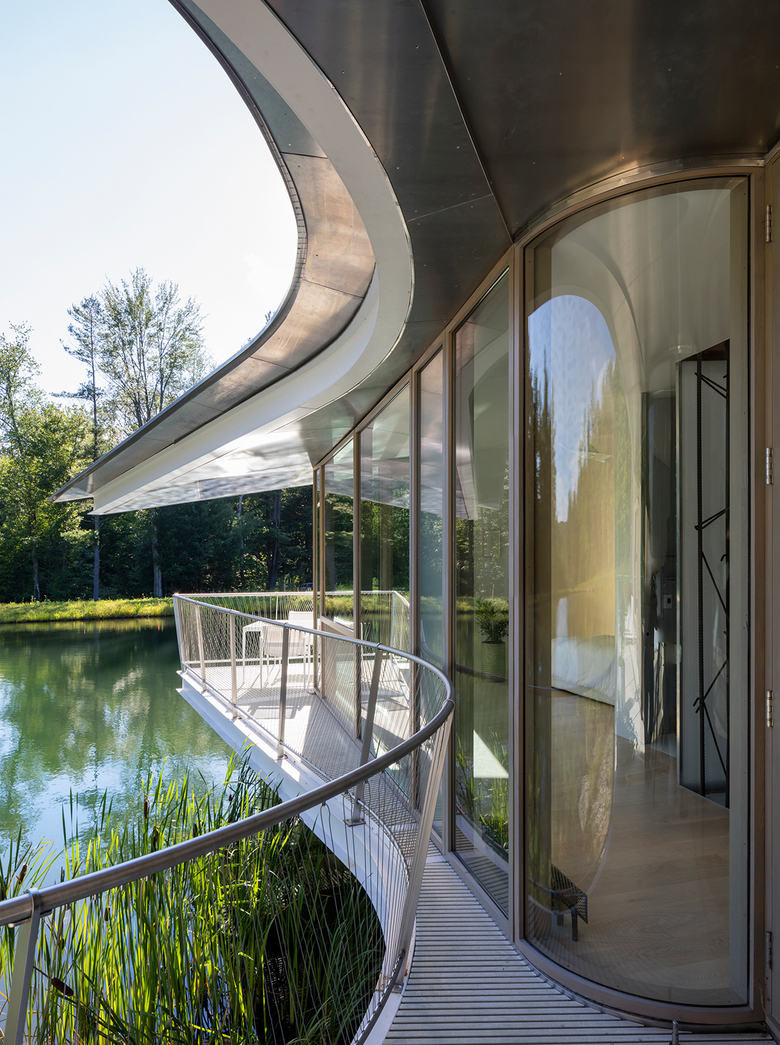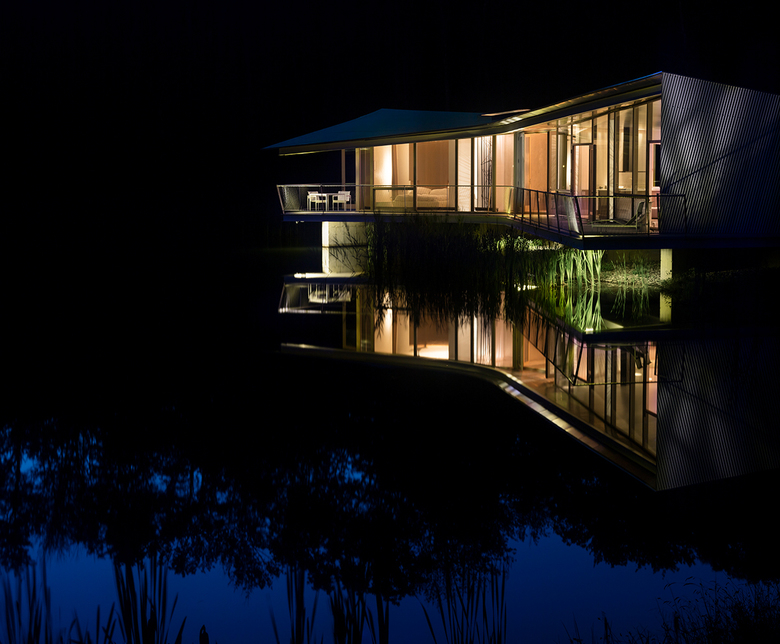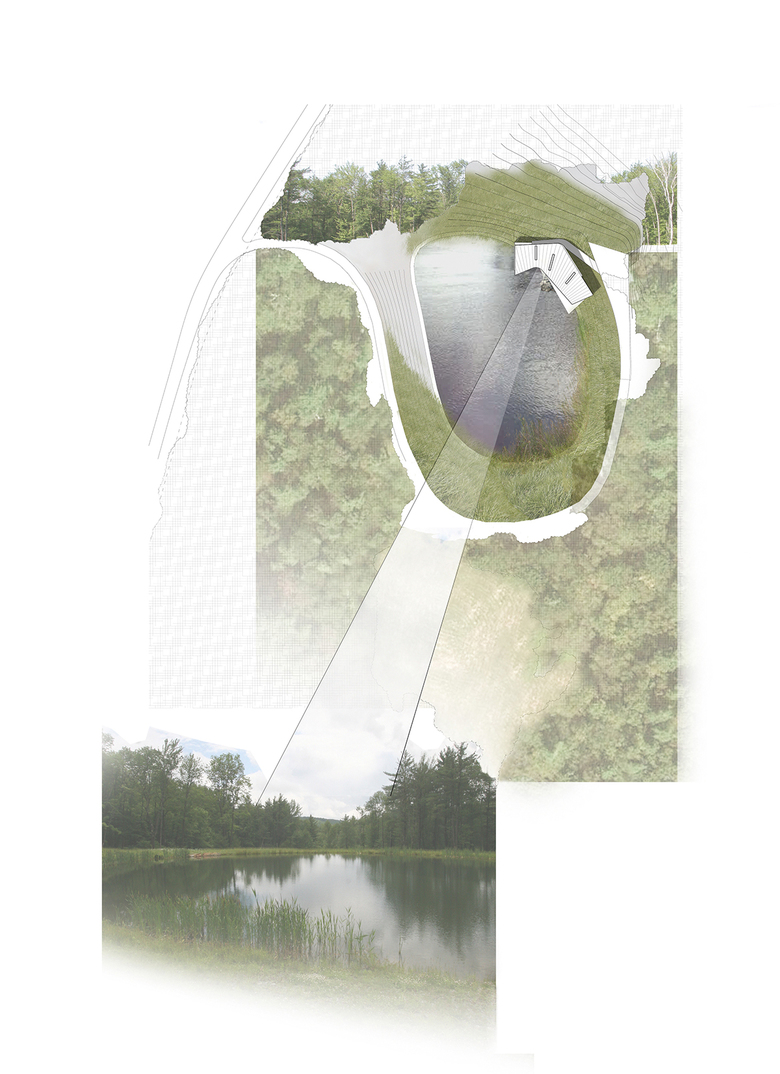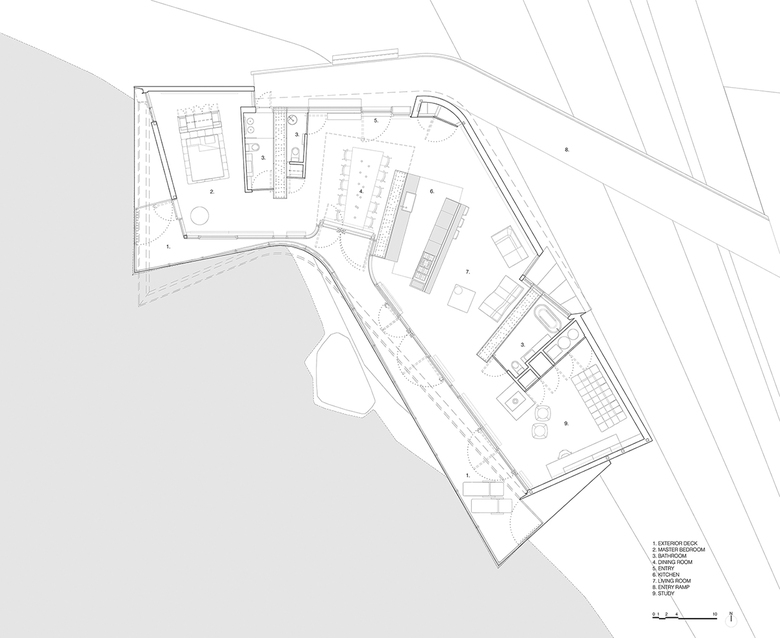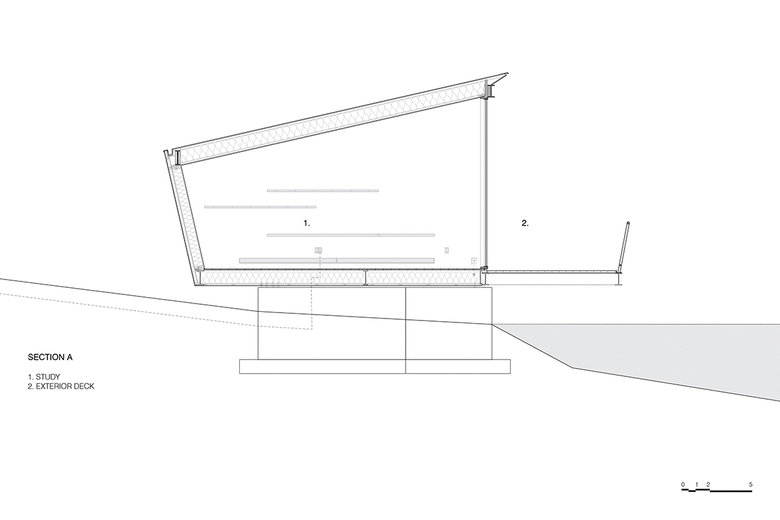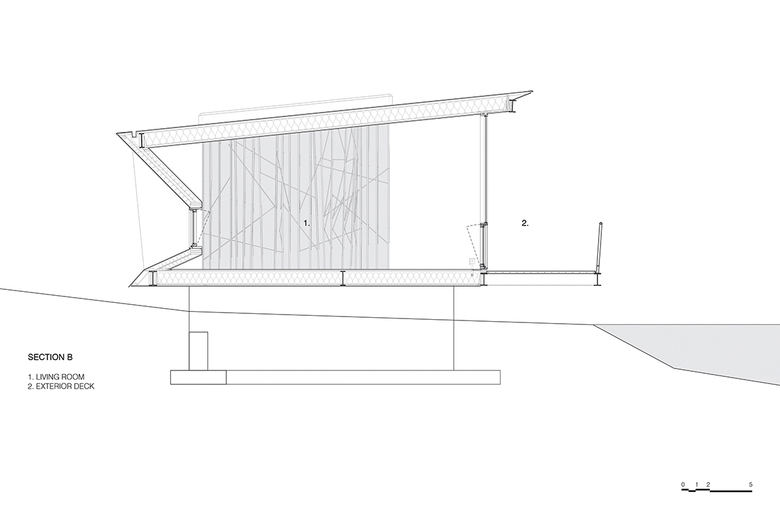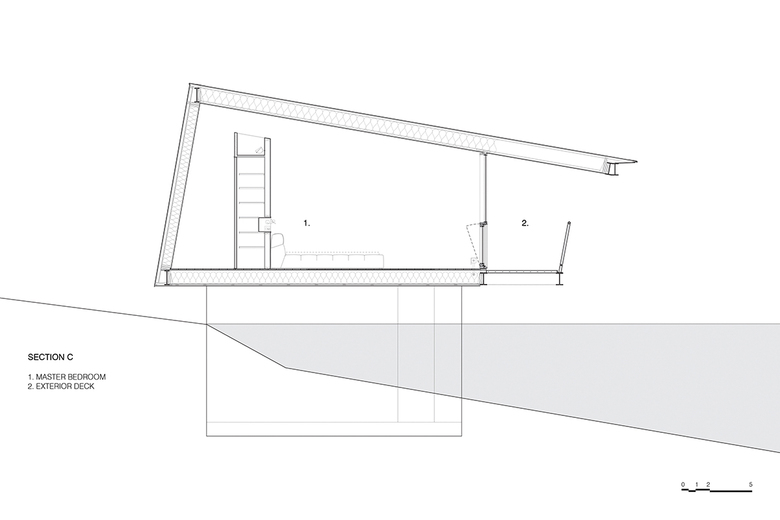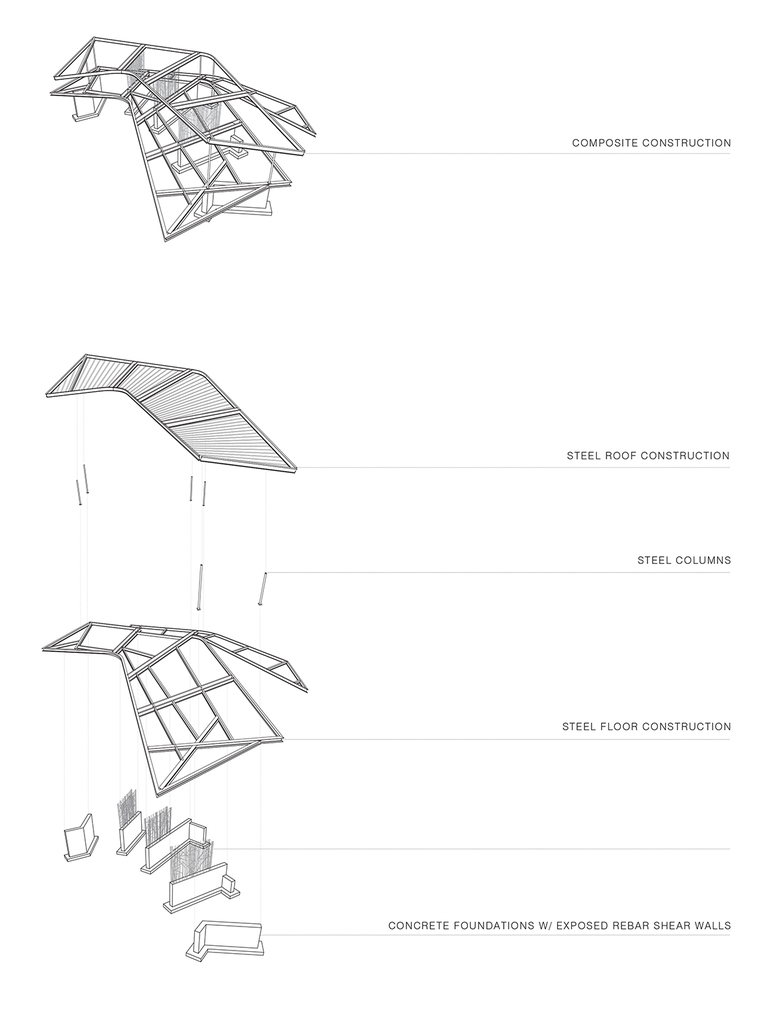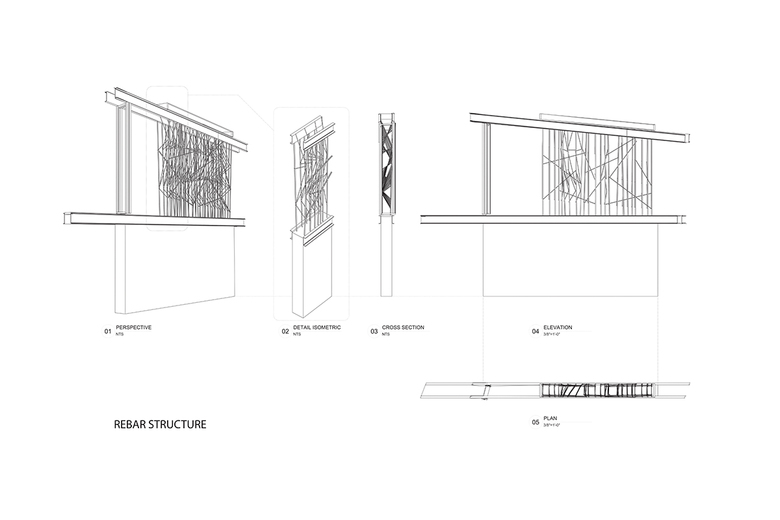Ephemeral Edge
Dean / Wolf Architects
12. 8月 2019
Photo: Paul Warchol, courtesy of Dean/Wolf Architects
This house, located a few hours north of New York City, takes its name from the pond it sits upon and looks across. Following the pond's edge, the house's curved form also relates to the sun overhead. Dean / Wolf Architects answered a few questions about Ephemeral Edge.
Location: Austerlitz, New York, USA
Client: Withheld
Architect: Dean / Wolf Architects
- Design Principal: Kathryn Dean, RA, AIA, FAAR
- Associate Partner: Chris Kroner
- Technical Consultant: Charles Wolf
- Project Team: Zachary Rousou
Landscape Architect: Reed Hilderbrand
Geotechnical Engineer: Crawford & Associates
Landscape Contractor: Webster Landscapes
Site Area: 15.6 acres
Building Area: 2,000 sf
Photo: Paul Warchol, courtesy of Dean/Wolf Architects
What were the circumstances of receiving the commission for this project?The client was a previous client with whom we had a wonderful relationship. They approached us asking for the sense of solace that they felt was in their current residence we had designed. The clients also asked for the table to be a feature in the space as it was in their current house. Programmatically, they wanted a weekend retreat and future retirement home located three hours north of New York City.
Photo: Paul Warchol, courtesy of Dean/Wolf Architects
Please provide an overview of the project.As a retreat, Ephemeral Edge contrasts the rapid sense of time and pressure of the city and extends the enjoyment and sensuousness of the everyday passage of time that is often highlighted in the open landscape.
This sense of extended time is accomplished by taking advantage of the site — a constructed pond within a forested hillside that overlooks a distant view. The design is informed by four site conditions:
- the curving edge of the pond,
- the torqued banks necessary to construct the pond,
- the spindly edge of the forest clearing, and
- the quiet beauty of the distant view.
The pond reflects the ephemeral aspects of living here — the changing light across its surface and the daily and seasonal fluctuations of temperature. The sweep of the pond’s edge joins seamlessly with the dynamic curvilinear roof and deck drawing these qualities inside the house.
The twisted form of the house responds to the torqued banks of the pond, required to construct flatness on a hillside. The rotating roof/wall completes the twist between the lower filled bank and the upper carved bank.
The delicate forest edge informs structure. Rebar emerges from three foundation walls as trunks and branches that float the house over the water. The radial plan of structure and skylights follows the sun — sequentially filling the intimate spaces of the house with the light and shadow of the forest.
The pond and the distant view are always present in the house. At the entry, where the dining space aligns with the distant view, doors open through the house, joining the intimate table to the larger landscape.
Photo: Paul Warchol, courtesy of Dean/Wolf Architects
What are the main ideas and inspirations influencing the design of the building?Very early on, architect and client agreed that the idea for the project would be to extend the enjoyment and sensuousness of the everyday passage of time by siting the house directly on the tranquil pond. Sunlight bounces off the pond and onto the reflective ceiling of the house — giving an animate quality to the interior space. Inside and outside fuse as the entire space opens to the breezes across the pond. The sunlight-starved trees of the deep forest were exposed at the edge of the forest when the clearing was cut to make this pond.
This spindly forest edge informs the structure and creates three light walls within the house which also gauge the passing of time. The rebar cages are wrapped in acrylic and polycarbonate, creating a mysterious interior volume of light. These volumes act as a kind of sundial — created by the skylights atop the rebar cages and the radial organization of their plan. The walls sequentially fill with a volumetric presence of light and shadows cast by the rebar. The master bath wall fills first, followed by the kitchen, and finally the living room. The light in each begins to fade as the next wall begins to fill. One feels the incredible power of the sun and is reminded of the light and shadow of the forest that surrounds the site. The rebar volumes of light and shadow define a switchback path through the house that reveals constantly changing views of the landscape. The inherent privacy of the meandering path results in a fluid movement as interior doors are only needed for bathrooms and closets.
Photo: Paul Warchol, courtesy of Dean/Wolf Architects
How does the design respond to the unique qualities of the site?The design of the house was created to overcome the problem of the slight strangeness of the original site. Because the site was sloping, the creation of the pond required cut and fill which left a large, unnatural landform at the center of the site.
By siting the house on the edge of the pond, the torqued banks of the pond became part of the vocabulary of the new house. The twisted form which results from the rotation of the rear wall and roof completing the movement of the banks of the pond. The house and pond belong together as part of the larger site.
Although the rotation of the form resolved an exterior site condition, the original impetus for this rotation was an interior experiential concern — the transformation of the section. The section opens up and out over the pond in the more public living spaces of the house which entices the occupant to the water. At the private end of the house, the section closes down with the roof sheltering the master bedroom to create an intimate view of the water with forced perspective.
Photo: Paul Warchol, courtesy of Dean/Wolf Architects
What products or materials have contributed to the success of the completed building?With the idea of ephemerality, the materials and structural ideas were all chosen for their relationship to light, lightness, and reflectivity. The invention of exposed rebar walls as the vertical structure of the house is the synthetic idea that fuses the house to the site and creates the deep sense of time within the house. Our structural engineer laughed when we asked him to consider supporting the house on rebar saying, "So you want to do concrete walls without the concrete?" But after several weeks he came up with a supporting diagram that allowed us the flexibility to design a playful system that worked within the necessary structural bracing conditions.
The rebar was originally chosen because the ribs in its structure were similar to the ripples in the surface of the water in the pond. The choice to expose and compose the rebar arose from the desire to mimic the play of light and shadow that exists within the forest that surrounded the site. It also linked the house to the spindly forest edge that was exposed when the pond was cut into the site.
The acrylic and polycarbonate panels which enclose the rebar walls diffuse this light and capture the shadow as sunlight filled the void produced within the rebar cage. The constant movement of the sun choreographs an ever changing interior. The pond inhabits the interior of the house through light as well. The use of polished plaster and sanded aluminum on the interior surfaces makes the space softly reflective — sunlight that bounces off the pond dances across the ceiling and walls.
Email interview conducted by John Hill.
Photo: Paul Warchol, courtesy of Dean/Wolf Architects
Important Manufacturers / Products (Exterior):- Steel: Benson
- Steel Windows: Duratherm
- Siding: Galvalume
- Fiberglass Decking: AMD Fiberglass Grating
- Railing: Maloya Laser
- Cable Hardware: Anzor
- Joists: GP Wood I Beam Joists
- Joist Hangers: Simpson Skewable U Hangers
- Roofing: EPDM
- Roofing Paint: Sherwin Williams Silver Brite
- Steel Paint: Benjamin Moore Super Spec HP DTM
Photo: Paul Warchol, courtesy of Dean/Wolf Architects
Important Manufacturers / Products (Interior):- Acrylic: Total Plastics
- Polycarbonate: Polygal
- Polished Plaster: Ron Decalvanti
- Bath Accessories: D-Line
- Lighting: Ingo Maurer
- Light Switches: Legrand
- Radiators: SlantFin with Custom Expanded Metal Cover
- Stone and Tile: Stone Source (Stone Counter: Olympian White Danby; Flooring: Celador; Tile: I Colori)
- Custom Table: Peter Superti, Prandoni Fabrication
- Stove: LaCanache
- Hood: Zephyr
- Refrigerators: SubZero
- Kitchen Sink: Kallista
- Bath sinks: Associated Fabrication
- Bath accessories: D-Line
- Faucets: Dornbracht
- Furniture: B&B Italia
Photo: Paul Warchol, courtesy of Dean/Wolf Architects
Photo: Paul Warchol, courtesy of Dean/Wolf Architects
Drawing: Dean/Wolf Architects
Drawing: Dean/Wolf Architects
Drawing: Dean/Wolf Architects
Drawing: Dean/Wolf Architects
Drawing: Dean/Wolf Architects
Drawing: Dean/Wolf Architects
Drawing: Dean/Wolf Architects
関連した記事
-
Ephemeral Edge
on 2019/08/12
-
Emergency Medical Station 50 at Queens Hospital
on 2017/03/03
